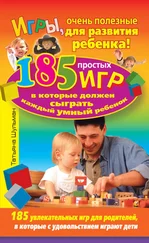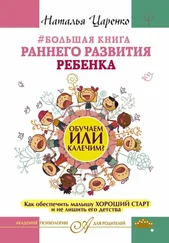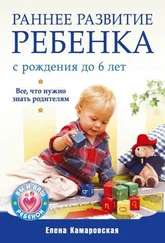Gentaz, E., Collignon, H. (2004), «Apprendre à lire avec les doigts» (Учиться читать с помощью пальцев), Médecine et Enfance.
Gillet, T., «Une enfance plus simple pourrait protéger nos petits contre les troubles psychiques» (Самое простое детство может защитить малышей от психических нарушений), Huffington Post, 12 апреля 2016 г.
Gilmore, C. K., McCarthy, S. E. & Spelke, E. S. (2007), «Symbolic Arithmetic Knowledge Without Instruction», Nature, 447, (7144), p. 589–591.
Gilmore, C. K., McCarthy, S. E. & Spelke, E. S (2010), «Non-Symbolic Arithmetic Abilities and Mathematics Achievement in the First Year of Formal Schooling Cognition, 115, (3)», стр. 394–406.
Glasel, H. (13 ноября 2014), «Difficultés des enfants à l’école: apport des sciences cognitives» (Трудности у детей в школе: вклад когнитивных наук), коллоквиум L’apport des sciences cognitives à l’école: quelles formation pour les enseignants? (Вклад когнитивных наук в школу: какое образование нужно учителям?), Collège de France.
Gopnik, A. (2010), Le Bébé philosophe (Младенец-философ), Le Pommier.
Gopnik, A. (2011), «What do Babies Think?», conférence TED.
Gopnik, A., Meltzoff, A. & Kuhl, P. (2005), Comment pensent les bébés? (Как думают маленькие дети?), Le Pommier, «Poche».
Gray, P. (2013), Free to Learn: Why Unleashing the Instinct to Play Will Make Our Children Happier, More Self-Reliant, and Better Students for Life, Ed Basic Books.
Grusec, J. E. & Redler, E. (1980), «Attribution, Reinforcement, and Altruism A Developmental Analysis Developmental», Psychology, 16, (5), стр. 525–534.
Gueguen, C. (2014), Pour une enfance heureuse: repenser l’éducation à la lumière des neurosciences (За счастливое детство: образование в свете нейронаук), Robert Laffont.
Hamlin, J. K., Wynn, K., Bloom, P. (2007), «Social Evaluation by Preverbal Infants», Nature, 450, (7169), стр. 557–559.
Hamlin, J. K. & Wynn, K. (2011), «Young Infants Prefer Prosocial to Antisocial Others», Cognitive Development, 26, (1), стр. 30–39.
Hanscom, A. (6 мая 2015 г.), «The Unsafe Child: Less Outdoor Play is Causing More Harm than Good», pour l’association Children & Nature Network.
Harbaugh, W., Mayr, U. & Burghart, D. (2007), «Neural Responses to Taxation and Voluntary Giving Reveal Motives for Charitable Donations», Science, 316, (5831), стр. 1622–1625.
Hart, B. & Risley, T. R. (2003), «The Early Catastrophe: The 30 Million Word Gap by Age 3», American Educator, стр. 4–9.
Helwig, C. C. & Turiel, E. (2002), «Children’s Social and Moral Reasoning», in The Wiley-Blackwell Handbook of Childhood Social Development, стр. 567–583.
Hoffman, M. (январь 2008 г.), «Empathie et développement moral. Les émotions morales et la justice» (Эмпатия и моральное развитие. Моральные эмоции и справедливость), Presses universitaires de Grenoble, coll. «Vies sociales».
Holt, J. (1995), How Children Learn, Da Capo Press.
Howe, N., Della Porta, S., Recchia, H., Funamoto, A., Ross, H. (2015), «„This Bird Can’t Do It ‘cause this Bird Doesn’t Swim in Water“: Sibling Teaching during Naturalistic Home Observations in Early Childhood», Journal of Cognition and Development, 16, (2), стр. 314–332.
Immordino-Yang, M. H., Christodoulou, J. A. & Singh, V. (2012), «Rest Is Not Idleness: Implications of the Brain’s Default Mode for Human Development and Education», Perspectives on Psychological Science, 7, стр. 352.
Izard, V., Sann, C., Spelke, E. S., Streri, A. (2009), «Newborn Infants Perceive Abstract Numbers», PNAS, 106, (25), стр. 10382–10385.
Janssens, J. M. A. M. & Dekovic, M. (1997), «Child Rearing, Prosocial Moral Reasoning, and Prosoial Behaviour», International Journal of Behavioral Development, 20, (3), стр. 509–527.
Keller, R. (2008), Natural Playscapes, Ed. Exchange Press.
Kellert, S. R. (1993), «The Biological Basis for Human Values for Nature», in Kellert, S. R., Wilson, E. O. (eds), The Biophilia Hypothesis, Island Press.
Kellert, S. R. (2005), «Nature and Childhood Development», in Building for Life. Designing and Understanding the Human-Nature Connection, Island Press, гл. 2.
King-Casas, B., Tomlin, D., Anen, C., Camerer, C. F., Quartz, S. R., Montague, P. R. (2005), «Getting to Know You: Reputation and Trust in a Two-Person Economic Exchange», Science, 308, стр. 78–83.
Kochanska, G. (2002), «Mutually Responsive Orientation Between Mothers and Their Young Children: A Context for the Early Development of Conscience», Current Directions in Psychological Science, 11, (6), стр. 191–195.
Kochanska, G. & Murray, K. T. (2000), «Mothers-Child Mutually Responsive Orientation and Conscience Development: From Toddler to Early School Age Child Development», 71, (2), стp. 417–431.
Kochanska, G., Aksan, N., Knaack, A. & Rhines, H. M. (2004), «Maternal Parenting and Children’s Conscience: Early Security as Moderator», Child Development, 75, (4), стр. 1229–1242.
Kraut, R. E. (1973), «Effects of Social Labeling on Giving to Charity», Journal of Experimental Social Psychology, 9, стр. 551–562.
Kuhl, P. (2011), «The Linguistic Genius of Babies», conférence TED.
Kuhl, P. K., Tsao, F. M. & Liu, H. M. (2003), «Foreign-Language Experience in Infancy: Effects of Short-Term Exposure and Social Interaction on Phonetic Learning», Proc. Natl Acad. Sci. USA, 100, (15), стр. 9096–101.
Kurdziel, L., Duclos, K. & Spencer, R. M. C. (2013), «Sleep Spindles in Midday Naps Enhance Learning in Preschool Children», Proc. Natl. Acad. Sci. USA, 110, стр. 17267–17272.
Lagercrantz, H. (2008), Le Cerveau de l’enfant (Мозг ребенка), Odile Jacob.
Lahey, J. (20 juin 2014), «Why Free Play is the Best Summer School», The Atlantic.
Langlois, J. H., Roggman, L. A. & Rieser-Danner, L. A. (1990), «Infants’ Differential Social Responses to Attractive and Unattractive Faces», Developmental Psychology, 26, стр. 153–159.
Lanzetta, J., Englis, B. (1989), «Expectations of Cooperation and Competition in Their Effects on Observer’s Vicarious Emotional Responses», Journal of Personality and Social Psychology, стр. 543–554.
Lecomte, J. (2012), La Bonté humaine (Человеческая доброта), Odile Jacob.
Lee, L., Piliavin, J. A. & Call, V. R. A. (1999), «Giving Time, Money, and Blood: Similarities and Differences», Social Psychology Quarterly, 62, (3), стр. 276–290.
Lengua, L. J., Honorado, E. & Bush, N. R. (2007), «Contextual Risk and Parenting as Predictors of Effortful Control and Social Competence in Preschool Children», Journal of Applied Developmental Psychology, 28, (1), стр. 40–55.
Lipscomb, T. J., Larrieu, J. A., McAllister, H. A. & Bregman, N. J. (1982), «Modeling and Chidlren’s Generosity: A developmental perspective», Merrill-Palmer Quarterly, 28, стр. 275–282.
Louv, R. (2005, 2008), Last Child in the Woods: Saving Our Children from Nature-Deficit Disorder, Chapel Hill, Algonquin Books.
Luby, J.-L. et al. (2012), «Maternal Support in Early Childhood Predicts Larger Hippocampal Volumes at School Age», Proc. Natl Acad. Sci. USA, 109, (8), стр. 2854–2859.
Luo, Y., Kaufman, L. & Baillargeon, R. (2009), «Young Infants’ Reasoning About Events Involving Inert and Self-Propelled Objects», Cognitive Psychology, 58 (4), p. 441–486.
Читать дальше
Конец ознакомительного отрывка
Купить книгу












